6 Terrifying Ways Films Used To Achieve Special Effects

Remember the old days, when stunts and effects were "real" and you didn't have to spend a whole movie pretending that the cartoon character next to Ian McKellen isn't in fact a green tennis ball on a stick? Well, if you go back even further -- before even crude effects and safety measures had been invented -- you'll find movies that were so "real" that they ranged from grossly irresponsible to outright murderous.
Action Films Once Used Real Bullets
In today's films, shooting effects are usually achieved with blanks, tiny explosives called "squibs," and if that's too much trouble, a dose of computer magic. In Hollywood's early years, they didn't have access to such fancy tools, so whenever gunfights occur in early movies, there's a good chance that they're really shooting at each other. If you lived near a film set, we're guessing you stayed inside that day.
They did have blanks back then, but that only lets you appear to fire the gun. To simulate a bullet hitting a wall/window/etc. next to an actor, well, they simply had a guy shoot it. If you needed some artillery fire for a war scene, same deal. All of the cannon fire in 1915's The Birth Of A Nation (the classic film that paints the KKK as the good guys, because 1915) is the real thing -- the pyrotechnics to fake it hadn't been invented yet.
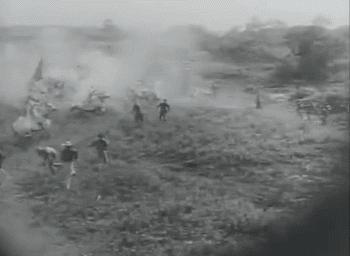
"I also insist on real racists! My audience demands authenticity!"
Then you have the infamously insane director Cecil B. DeMille (not his only appearance on the list, by the way), who had blanks available to him but thought live ammunition looked more realistic. For the 1915 film The Captive, he wanted a scene wherein some soldiers shoot their way through a door with real bullets, because it would look cool as hell. Then for the next scene, they were to rush inside and continue the shootout with blanks. Want to guess what happened?

Hint: Think Brandon Lee in The Crow.
Yep, somebody forgot to swap out the real bullets and an actor got fucking killed.
In the decades to come, "squibs" to simulate bullet strikes were around but still expensive, and action movies began to run ads boasting that they'd used real bullets, the same way Tom Cruise movies now go on and on about how he does his own stunts. The studios would hire marksmen, and they'd have to carefully plan shots so that actors weren't at risk even from a ricochet.
In William Wellman's 1931 gangster film The Public Enemy, James Cagney (and everyone else on set) swears they shot up this corner a split second after he ducked around it ...


Apparently they really had it out for Cagney.
... even though it seems like they could have easily created the effect with a clever edit. Then there's this shot, where a mirror gets shattered by bullets with two terrified children mere feet away. They ... wouldn't have used live ammo for that, would they? We're not sure, but the actors seem to be taking great pains to stand perfectly still:
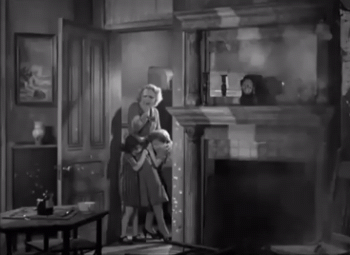
"Gun safety" were two words that weren't put together for another few decades.
A few years later, Cagney was nearly shot on the set of the movie Taxi! and declared he wouldn't work with live ammo ever again (he later helped found the Screen Actors Guild, which among other things cemented actors' rights to not be literally fucking shot at during productions).
For Bible Epics, Actors Would Fight Actual Lions
We mentioned DeMille, one of Hollywood's early famous producer/directors, was responsible for a number of sweeping epics, including the Charlton Heston classic The Ten Commandments and a handful of other Biblical movies. Well, when you're making Bible movies, it's understood that they're going to involve lions, as they were the animals responsible for devouring the most Christians. And clearly only a real lion would do -- even audiences back then wouldn't fall for a cat chewing on a GI Joe doll. The problem was they also weren't big on fancy camera tricks that would keep the actors separated from an animal that presumably spent all of its time calculating the most effective way to eat its co-stars. So here's a scene from DeMille's 1919 film Male And Female:

Or Hungry Lion And Delicious Co-Stars
That is actress Gloria Swanson with an real, non-drugged lion sitting on her back. Swanson later reported that she was "terrified" during this shot, because she is a rational human adult, but she stuck it out like a trooper because the show had to go on and at least the lion didn't have a gun. As it turned out, she was right to be scared, because this same lion reportedly killed another crew member two weeks later. He stayed his paws in this scene only because he was surrounded by humans and presumably couldn't decide which one of them he was going to maim first.
During production on another film, 1932's The Sign Of The Cross, DeMille reportedly enticed a bunch of lions to become aggressive by beating them with wooden ax handles until they got pissed off enough to attack the actors.
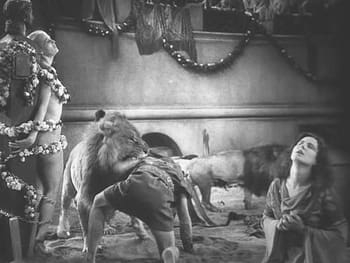
"If I wanted some chickenshit lion, I would have hired that asshole from Wizard Of Oz!"
Later, DeMille's 1949 film Samson And Delilah stepped it up and required star Victor Mature to fight a live lion. Quite reasonably, Mature refused to battle an apex predator for a filmed session of spirited make-believe, which resulted in the filmmakers having to simulate it using a combination of a stunt double (who totally fought the lion) ...


"King of the jungle, my ass!"
... and a stuffed lion for close-ups when Mature's face was visible:

The stuffed lion would go on to win a Best Supporting Actor Oscar.
DeMille would later refer to Mature as "the greatest coward ever born," which is a thing you can say when nobody has ever asked you to wear a ridiculous costume and fight a lion for a fucking movie. If The Jungle Book had been made back then, they would've gone through like 12 Mowglis.
Not that things were any better for the animals ...
Brutally Killing Horses Was A Standard Filmmaking Technique
If any modern films feature any kind of nonhuman life form, they almost always come with a disclaimer at the end from the American Humane Association guaranteeing that "no animals were harmed during the making of this film." However, early Hollywood didn't give a tinkerer's damn about animal safety, which should come as little surprise, considering they barely cared about human safety. And no animal got it worse than the horses.
For example, in 1939, two horses were deliberately killed on the set of the movie Jesse James when they were blindfolded and then forced to run over a 75-foot cliff into the ocean. But that's nothing -- it's said that over 100 horses died during the filming of Ben-Hur, the 1925 Biblical epic (not the one featuring Charlton Heston -- that was a remake).

Nor the 2016 version that you just learned was a thing.
So how in the hell do you even kill that many horses? Mainly by treating them as disposable props. Consider the common stunt technique known as the " Running W." In short, this was used to make horses fall over on command, because it turns out that horses aren't very good actors. It entailed tethering a long wire to the horse's front legs and then making them run. When the horse reached a determined point and the slack ran out, the wire would pull tight and the horse would fall on its face, often killing it or breaking its legs.
That's right -- pretty much any time you see a horse fall over mid-stride in an old movie (particularly westerns), there's a good chance you are watching it die.

All of these horses were later used to stock the craft services table.
Renowned stuntman Yakima Canut was incensed by the wanton horse murder and personally invented a new device for the Running W technique that would snap as soon as the horse fell over, reducing the severity of the impact. Canut would later brag that his invention reduced on-set horse injuries to zero, but for some reason, in 1940, the government still decided that this is a shitty thing to do to animals and outlawed it.
If you're wondering how they have been pulling off "collapsing horse" stunts in the decades since, they came up with a training technique that could teach a horse to fall over and play dead on cue:
As to whether or not that should still be considered cruel, well, feel free to debate that amongst yourselves.
Early Film Makeup Was Toxic And Potentially Fatal
You might've heard the famous piece of Hollywood trivia about Buddy Ebsen, the original Tin Man from The Wizard Of Oz, who had to be replaced after the silver paint on his body landed him in the hospital for two weeks. The filmmakers changed the recipe for the makeup in an attempt to not murder Ebsen's replacement, Jack Haley, but Haley nevertheless wound up with a severe eye infection. This, it turns out, was common.

We're off to see the ER, the wonderful ER of Oz!
As recently as the middle of the 20th century, film makeup was made from a variety of toxic substances that could badly mess you up if you kept it slathered on your body for too long, because it occasionally takes humans an incredibly long time to start knowing things (such as "Don't smoke in hospitals" and "Don't drink radium"). But nothing struck fear into the hearts of makeup artists like the color green.
Green makeup was made from copper oxide, which will do horrible things to you if it gets into your body. Margaret Hamilton, the Wicked Witch of the West in The Wizard Of Oz, was covered in it, and it caused a medical crisis when she suffered a severe burn during an accident on set. The burn itself wasn't life-threatening, but getting some of that green paint into the wound absolutely was. Makeup artists had to meticulously remove every spot of paint from Hamilton's body with alcohol before she could be effectively treated -- as he said, "you don't take chances with green."

It's not easy being green. Seriously.
One actor who took all sorts of chances with green was Boris Karloff, the original Frankenstein monster. His iconic green skin tone was achieved with the same death-paint that almost killed the Wicked Witch. He made it out alive, but we bring this up because Karloff's Frankenstein movies were all shot in black and white, so audiences had no goddamned idea he was even wearing it.
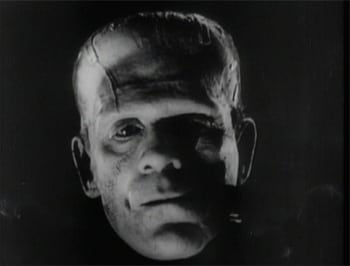
Arsenic poisoning is the mark of a great actor.
The First Stop-Motion Animation Was Made With Dead Insects
Stop-motion is a technique almost as old as film -- take a series of still photos of an object in various positions, string them together, and it looks like the object is moving. The pioneer of this form is generally accepted to be the Polish-Russian director Ladislas Starevich, who came up with the concept while trying to invent new ways to torture insects, because that's what you do when you're a turn-of-the-century experimental filmmaker from Eastern Europe.

This is what you get in a world without TV and internet.
Starevich was a nature documentarian with a special interest in bugs. In 1910, he wanted to film a battle between two stag beetles, but the nocturnal beetles wouldn't cooperate because as soon as he turned on the lights, their primitive insectoid brains switched out bloodlust with nap time. The solution that Starevich came up with was to kill the beetles and puppeteer their corpses with stop-motion.
He found the experience rewarding, so much so that he branched out from nature documentaries and began making his own narrative movies using dead insects as the stars. His groundbreaking 1912 film The Cameraman's Revenge, a story about interspecies bug infidelity, is more entertaining than that description sounds -- and by "entertaining," we of course mean "tinshit-whistling insane."
The 13-and-a-half-minute movie is the story of a stag beetle who cheats on his wife each night with a dragonfly stripper at the local insect strip club. His love rival is a grasshopper, who takes his revenge by filming Mr. Beetle's infidelity through a bug hotel keyhole.

Lynch and Cronenberg have been battling for decades over the remake rights.
Later, Mr. Beetle discovers that his wife is also cheating on him with, uh, a cicada? We ... we don't know bugs. The husband and wife have a violent domestic argument, because this was still the early 1900s, and then they make up and go to the movies together. But in a surprise twist, the grasshopper from the first act is the projectionist, and he switches out the scheduled film with the beetle-on-dragonfly sex tape he recorded earlier.
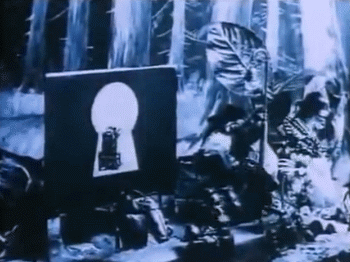
Featuring some of the finest insect masturbatory stop-motion ever shown in film.
Again, all of this was accomplished with hundreds of hours spent manipulating the limbs of insect corpses. Moviegoers at the time couldn't figure out how Starevich made the film, and given that the moving picture concept itself was still only a few decades past everyone assuming it was some form of witchcraft, it's easy to see how people were baffled. (It's a miracle that Starevich wasn't put on trial for bug sorcery.) One reviewer remarked that Starevich was the greatest insect trainer alive, and Starevich humbly accepted the compliment.
Movie Stunts Used To Be Horrifyingly Authentic
Let's be clear: Movie stunts are still dangerous as hell. Even with CGI, hidden wires, and floors covered in state-of-the art lime-green safety mats, brutal injuries and even deaths are still shockingly common. That said, once upon a time, if your movie needed a fiery plane crash, then a real person needed to get up in a plane and make that shit happen. A significant number of the stunts you see in old-timey movies are the actor actually doing the thing you're watching.
The 1923 film Safety Last! is famous for the iconic scene of actor Harold Lloyd dangling from a clock on top of a skyscraper. It's a well-known image that's been repeated in everything from Back To The Future to a Jackie Chan movie:
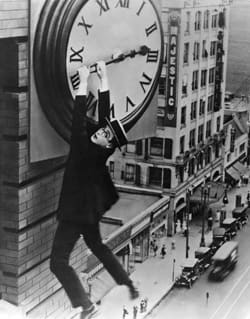
"Clock-hanging" later became the "planking" of the 1920s.
That's totally real. In 1923, there was no way to fake this scene -- Lloyd had to just hang off that damn clock. There were some limited safety precautions -- for example, there's a platform below him that's higher than the apparent 12-story drop -- but it was still dangerous enough that an insurance company refused to cover him. (Incidentally, in the aforementioned Jackie Chan movie, Jackie does this stunt the old-fashioned Harold Lloyd way, because he is a crazy person.)
Convincing actors to risk their lives for their craft was hard, so it wasn't too long before a new profession was born: stunt performing. Yakima Canut, he of less-violent horse abuse technology, was one of the first. Half of the stunts you see in classic westerns, from leaping between horses during chase scenes to driving stagecoaches off of cliffs, were achieved by Canut and his uniquely elaborate death wish.
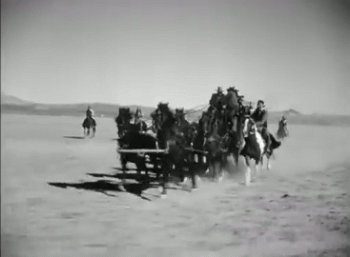
Medical science still hasn't figured out how he was able to leap that far with balls that gigantic.
But the most impressive and dangerous stunt effects were the plane crashes. When you see a plane go down in a blaze of glory in an early Hollywood film, it wasn't a model -- it was a real plane likely flown by either Ormer Locklear or Dick Grace, the go-to stunt pilots of the era. Locklear was a former World War I pilot who it seems decided that life is too boring when you're not almost dying every day, and he made a career out of crazy on-camera airplane stunts, including wing-walking and plane-to-plane transfers (and we should remind you that this was the early 1900s and these were shitty biplanes not too far removed from the ones the Wright Brothers cobbled together in their garage). In 1920's The Skywayman, Locklear flew his plane through a church steeple, wrecking both the steeple and the plane.

And his clean underwear.
The stunt was so absurdly dangerous that Locklear barely survived it. And while most people would probably take the Universe's warning and retire after such a close call, Locklear wasn't most people. He got right back into the cockpit and, predictably, was killed when he crashed while attempting a controlled dive for another stunt in the same movie.
As hardcore as that is, Dick Grace might've had even more intestinal fortitude. He was the stunt pilot in 1927's Wings, the winner of the first-ever Best Picture Oscar. This is him:
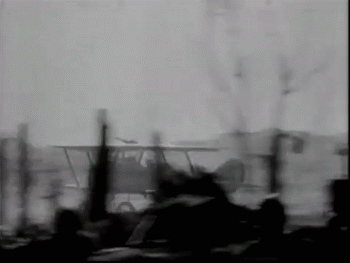
He did not get an award.
When Grace was introduced to the decrepit World-War-I-era planes that he would be flying in the movie, he brought in a team of engineers -- not to fix them, but to break them even more. They would intentionally weaken sections of the aircraft because when he crashed these things, he wanted to crash the hell out of them, and he knew that flying debris would help sell the realism.

"Planes weren't the only thing I broke ..."
It's not too surprising to learn that Grace broke his neck flying one of these planes directly into the ground at 110 mph. What is surprising is that he goddamn survived and went right back into the stunt pilot business until he eventually died. Of old age.
3C Robles-Jackson is a writer living in Detroit. You can read his weird story about urban decay here. He tweets here. He blogs here
For more instances where Hollywood went just a little overboard, check out 5 Great Movie Scenes Made Possible by Reckless Endangerment and 12 Classic Movie Moments Made Possible By Abuse And Murder.
Subscribe to our YouTube channel, and check out 20 Movie Special Effects You Won't Believe Aren't CGI, and other videos you won't see on the site!
Follow us on Facebook, and let's be best friends forever.





